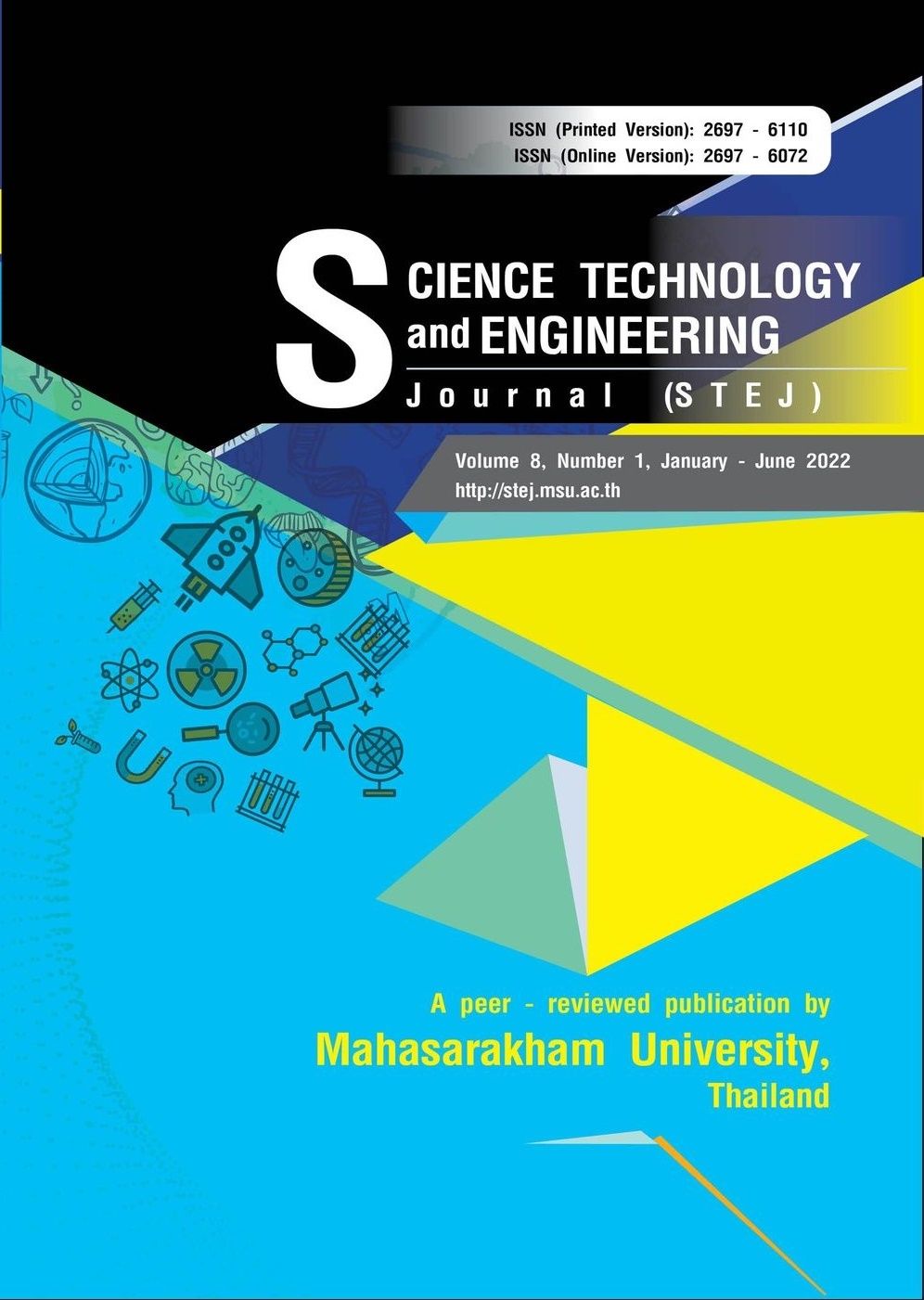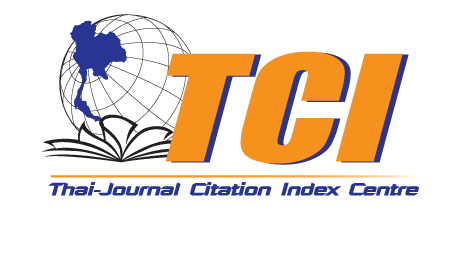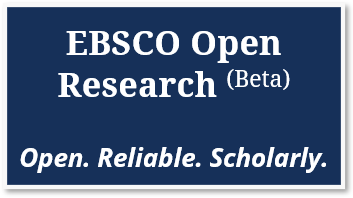Product development of functional beverage from jambolan (Syzygium cumini) juice supplemented with rambutan syrup
Keywords:
Rambutan, syrup, jambolan, juice, propertiesAbstract
Abstract - This study developed beverage from jambolan juice supplemented with the rambutan syrup. The rambutan syrups were prepared from three varieties including Rong Rien, See Chom Puu, and See Thong. The juices were extracted by compression and concentrated by rotary evaporation to have total soluble solid (TSS) around 75 °Brix. Based on color and texture attributes, with the highest viscosity, rambutan syrup from See Chom Puu was selected for further use as an ingredient in jambolan juice beverage. The beverage developed from jambolan juice supplemented with rambutan syrup 13 °Brix had highest liking scores of taste, texture and overall liking that were 7.14±1.2, 7.08±0.76 and 7.23±1.67, respectively. Therefore, this condition was chosen to study the effect of temperature and time on the properties of jambolan juice supplemented with rambutan syrup. oBased on sensory evaluation results, the temperature and time did not affect color, aroma, texture and overall acceptability of the jambolan juice supplemented with rambutan syrup, whereas, there was an effect on taste when temperature and time increased. This finding suggested that developed jambolan juice supplemented with rambutan syrup could be considered as an alternative functional beverage for health-conscious consumers.
References
Branco, I.G., Moraes, I.C.F., Argandona, E.J.S., Madrona, G.S., Santos, C., Ruiz, A.L.T.G., Carvalho, J.E., & Haminiuk, C.W.I. (2016). Influence of pasteurization on antioxidant and in vitro anti-proliferative effects of jambolan (Syzygium cumini (L.) Skeels) fruit pulp. Industrial Crops and Products, 89, 225- 230. https://dx.doi.org/10.1016/j. indcrop.2016.04.055.
Campos, A.P.R., Chiste, R.C., & Pena, R.S. (2021). Camu-camu and jambolan juice blend : sensory analysis and bioactive compounds stability. Food Science and Technology, 41(1), 82-89. https://doi.org/10.1590/ fst.37519.
Carvalho, T.I.M., Nogueira, T.Y.K, Mauro, M.A., Gomez-Alonso, S., Gomes, E., Da-Silva, R., Hermosin-Gutierrez, & Lago-Vanzela, E.S.(2017). Dehydration of jambolan (Syzygium cumini (L.)) juice during foam mat drying : Quantitative and dualitative changes of the phenolic compounds. Food Research International, 102, 32-42.
Charoensuk, K., Vipatjarernlap, T., & Anartngam, P.(2015). Investigation of rambutan granule production process and its sensory quality. Journal of Agricultural Technology, 11(8), 2219-2226.
Feng , P., Weagant, S.D., Grant, M.A., & Burkhardt, W.(1998).Bacteriological analytical manual. (8th Edition), United States. Helge, T.S. (2009). Statistical analysis of designed experiments (3rd Edition). Springer.
Hernandez-Hernandeza, C. Aguilara, C.N. Rodríguez-Herreraa, R., FloresGallegosa, A.C.,Morlett-Chavezb, J., Govea-Salasc, M., & AscacioValdes, J.A. (2019). Rambutan (Nephelium lappaceum L.): Nutritional and functional properties. Trends in Food Science & Technology, 85, 201-210.
Oliveira, E.R., Caliari, M., Junior, M.S.S., & Boas, E.V.B.V. (2016). Bioactive composition and sensory evaluation of blended jambolan (Syzygium cumini) and sugarcane alcoholic fermented beverages. Journal of Institute of Brewing, 122, 719-728. https://doi.10.1002/jib.370.
Pratiwi, D.E., & Setiawan, I. (2020). The formulation of rambutan leaf (Nephelium lappaceum L.) extract on syrup preparation. Journal of Nutraceuticals and Herbal Medicine, 3(1), 1-9.
Silva, T.L., Aguiar-Oliveira, E., Mazilli, M.R., Kamimura, E.S., & Maldonado. (2017). Comparison between titrimetric and spectrophotometric methods for quantification of vitamin C. Food Chemistry, 224, 92-96.
Singh, J.P., Kaur, A., Singh, N., Nim, L., Shevkani, K., Kaur, H., & Arora, D.S. (2016). In vitro antioxidant and antimicrobial properties of jambolan (Syzygium cumini) fruit polyphenols. LWT-Food Science and Technology, 65, 1025-1030.
Soares, J.C., Garcia, M.C.,Gracia, L.G.C., Caliari, & Junior, M.S.S. (2018). Jambolan sherbets overrun, color, and acceptance in relation to the sugar, milk, and pulp contents in formulation. Food Science and Technology, 38(Suppl.1):313-318. https://dx.doi.org/10.1590/fst.21817.
Swami, S.B., Thakor, N.S.J., Patil, M.M., & Haldankar, P.M. (2012). Jamun (Syzygium cumini (L.): A review of its food and medicinal uses. Food and Nutrition Sciences, 3, 1100- 1117. https://dx.doi.org/10.4236/ fns.2012.38146.
Sun, D.W. (2009). Engineering aspects of thermal food processing. CRC Press Taylor & Francosis. Group .https://doi.org/10.1201/97814 20058598
Tavares, I.M.C.,Lago-Vanzela, E.S., Rebello, L.P.G., Ramos, A.M., GomezAlonso, S., Gracia-Romero, E., Da-Silva, R., & Hermosin-Gutierrez, I.(2016). Comprehensive study of the phenolic composition of the edible parts of jambolan fruit (Syzygium cumini (L.) Skeels). Food Research International, 82, 1-13. https://dx.doi.org/10.1016/j. foodres. 2016.01.014.
Watts, B.M., Yumaki, C.L., Jeffery, L.E., & Elais, L.G.(1989). Basic sensory methods for food evaluation. The International Development Research Centre, Canada.
Widdowson, E.M., & Mc Cance, R.A.(1935). The available carbohydrate of fruits determination of glucose, fructose, sucrose and starch. Biochemical Journal, 151- 156.
Winkler, A., & Knoche, M. (2018). Predicting osmotic potential from measurements of refractive index in cherries, grapes and plums. PLOS ONE, 18, 1-11.
Yoon, K.Y. , Woodams, E.E., & Hang, Y.D.(2004). Probiotication of tomato juice by lactic acid bacteria. Journal of Microbiology, 42, 315-318.
Zee, F., Chan, H., &Yen, C.(1998). Lychee, longan. Rambutan and pulasan. In Shaw, P.E., Chan, H.T., Nagy, S. eds.). Tropical and Subtropical Fruits (pp. 290-335). AgScience Inc.
Downloads
Published
How to Cite
Issue
Section
License
Copyright (c) 2022 Science Technology and Engineering Journal (STEJ)

This work is licensed under a Creative Commons Attribution-NoDerivatives 4.0 International License.








